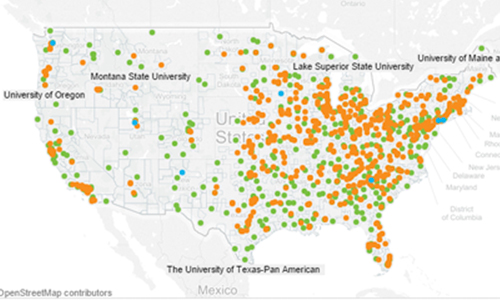Blog article


Who Moved the Mathematics?: The Need for IMPACT
This American Mathematical Association of Two-Year Colleges (AMATYC) article examines the three key areas of mathematics teaching and learning: ways of doing, ways of thinking and habits of thinking.


Why Arizona Needs Common Core Standards
This The Arizona Republic article examines the three key areas of mathematics teaching and learning: ways of doing, ways of thinking and habits of thinking.


Mapping the road to college with the College Explorer tool
NWEA recently launched a new tool called College Explorer that enables middle school and early high school-age students to use their Measures of Academic Progress ® (MAP®) scores to see which colleges and universities they’re on track to enter long before they embark on the college application process.
By: Greg King
Topics: Innovations in reporting & assessment, College & career readiness, High school


What does equity and accessibility look like within assessment?
Creating tests and items from the beginning with Universal Design for Learning in mind, removing barriers by adding alt-tags, and incorporating more culturally rich materials are all steps NWEA is doing to improve our equity for all students.
By: Elizabeth Barker
Topics: Equity, Accessibility


NWEA promotes accessibility in assessment with release of image description guidelines
Image descriptions are important to make computer-based assessments accessible to students using assistive technology (AT) devices, such as screen readers and refreshable braille displays. NWEA, with support from the National Center for Accessible Media (NCAM), has created guidelines for describing many variations of images, charts, and graphics targeted specifically to the disciplines of reading, language usage, science, and mathematics.
By: Elizabeth Barker
Topics: Equity, Accessibility


Design Challenge winner: Student assessment engagement
In this CASEL Measuring SEL blog, James Soland shares how work with Santa Ana Unified School District led to new insights on how item response times and test metadata may provide insight into student SEL.
By: James Soland
Topics: School & test engagement, Innovations in reporting & assessment, Social-emotional learning


A Tech Refresh for Reading Fluency
In this Ed Tech Digest article, Cindy Jiban discusses how oral reading fluency assessment is now commonplace in the primary grades. This represents a significant step for data-based problem solving in education. However, given some of the side effects that have emerged, it is clear that fluency assessment is due for significant structural improvement.
Topics: Measurement & scaling, Academic content, Reading & language arts


